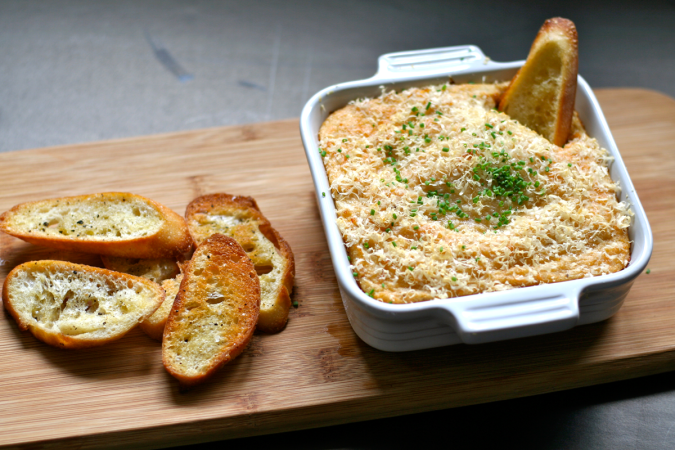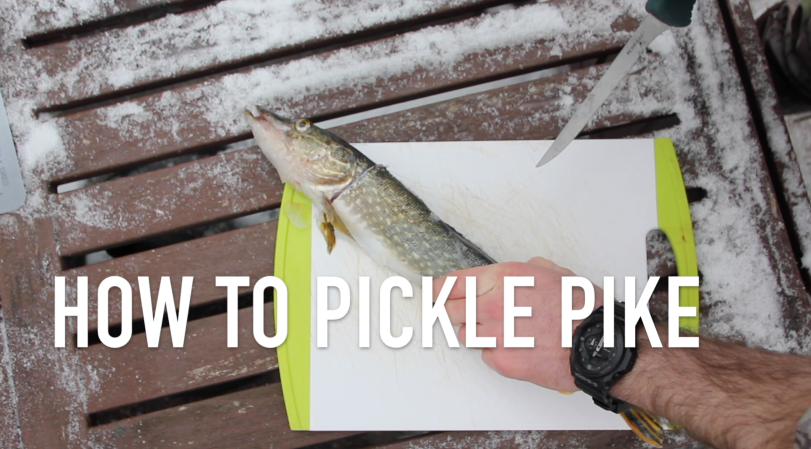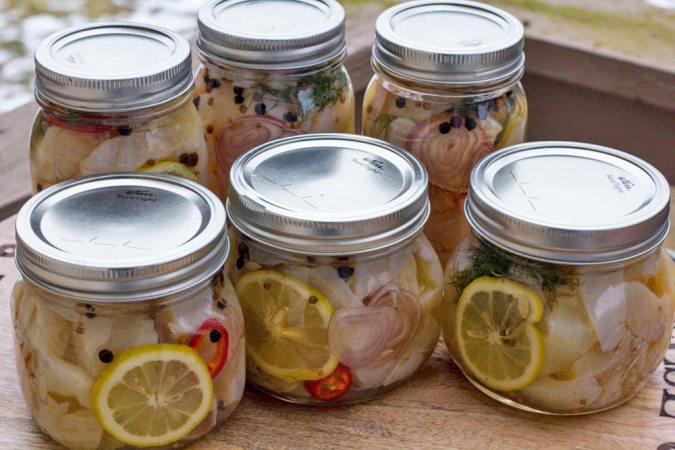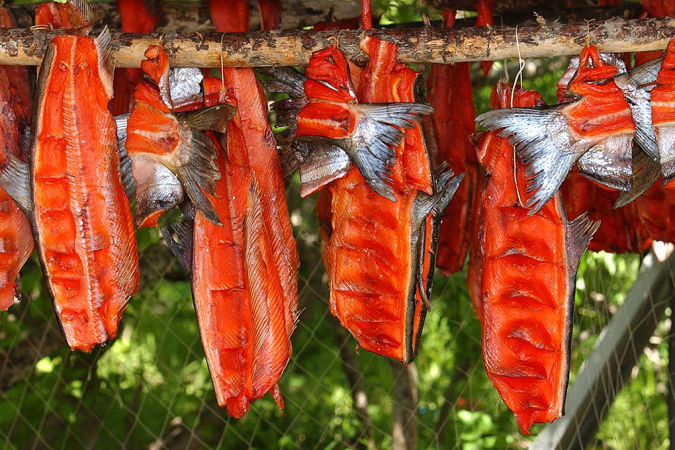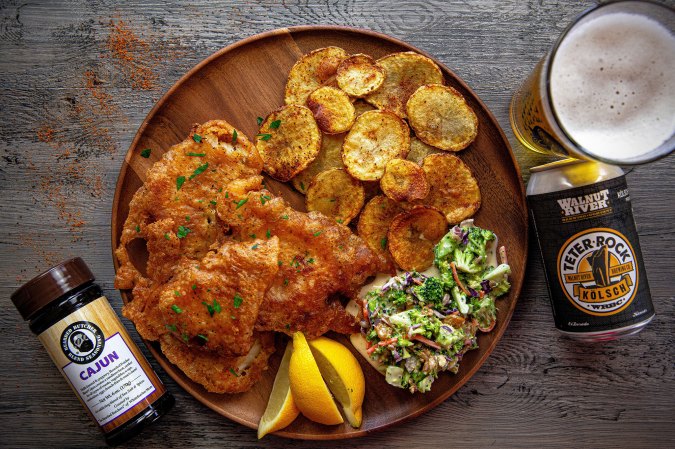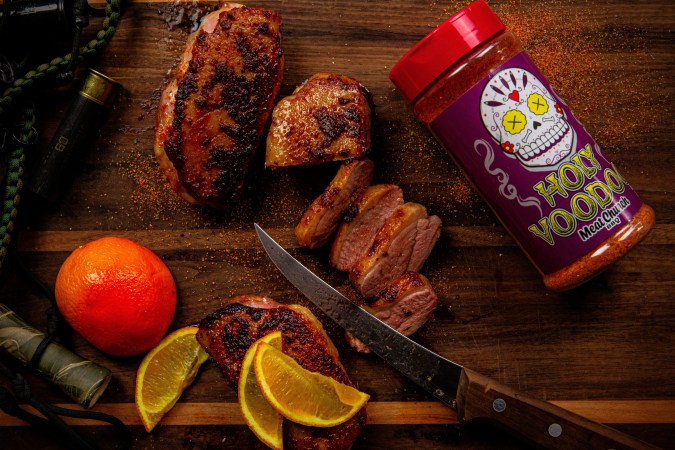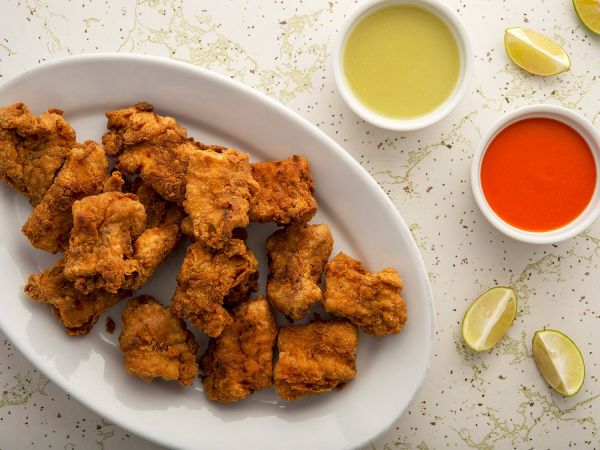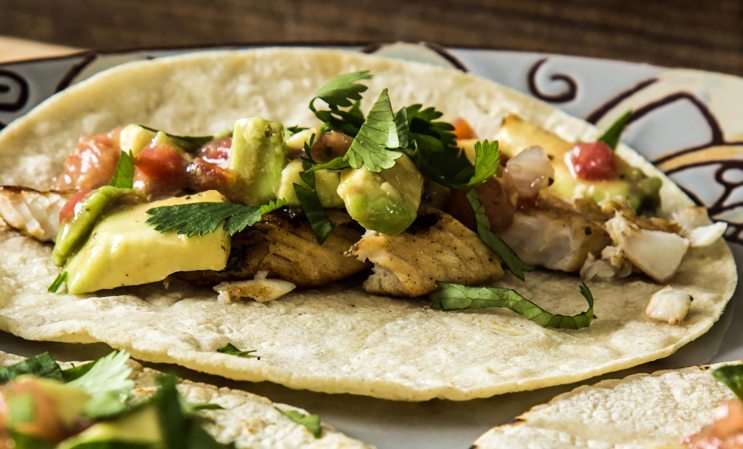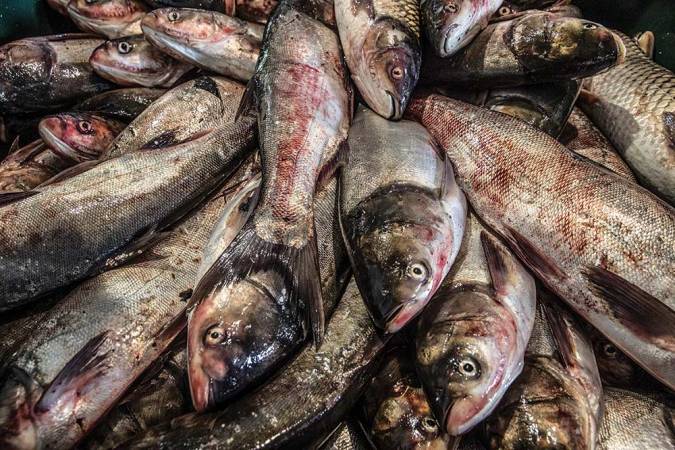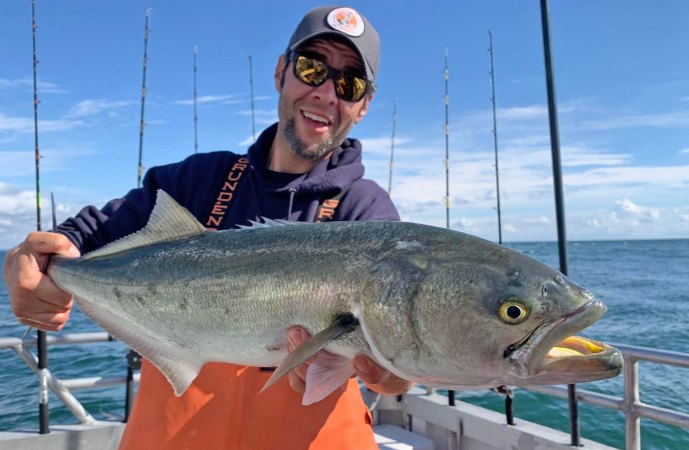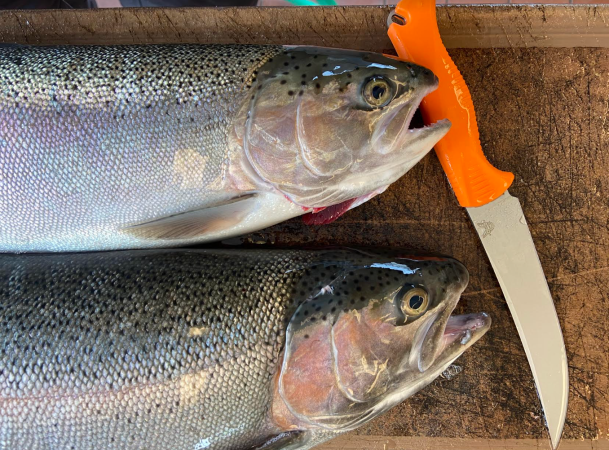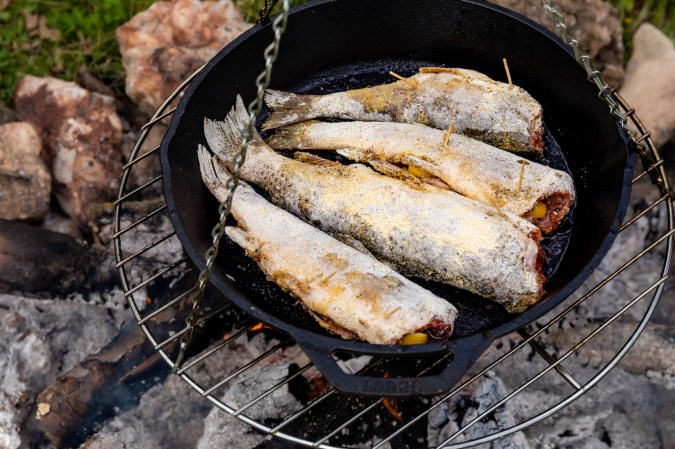Smoking fish is a little like alchemy. Take a few common ingredients, spike them with a pinch of this and a touch of that, add heat and smoke, and what do you get? A precious commodity, to be sure.
Through the transformative properties of brine and wood chips, fish with a modicum of oil in their flesh, such as salmon and trout, take on delicious nuances of flavor. Beyond the basic salt and sugar solutions that ready the fish for flavor and color development in the smoker, the particulars of spices, flavorings and types of wood chips are open to interpretation. “The brining and smoking process is entirely chemistry,” says Jill Bentgen, proprietor of Mackinac Straits Fish Co. Bentgen left a career at Procter & Gamble to smoke whitefish and lake trout in her native Upper Peninsula of Michigan. “You’re taking diffusion rates and very simple ingredients and turning them into something wonderful.”
Got Salt?
The most important factor in the smoking process is your choice of fish. Fillets with at least a touch of oil are the most conducive to taste and moisture. These include the full assortment of salmon and trout, plus whitefish and ciscoes. The best saltwater species include mackerel, bluefish and eels. Low-fat species–bass and walleye, for instance–tend to dry out and have a mealy, unpalatable texture. And while it’s possible to smoke fish steaks or whole fish (small trout, gutted and smoked whole, are dynamite), fillets absorb salt more evenly and completely during the brining process.
Brining is a crucial step that prepares the fish fillets for smoking, replacing the liquid in the flesh with a salt-and-sugar solution. A couple of relatively diluted brining solutions contribute to more even flavoring than would a high-octane potion loaded with salt. An old standby recipe is 1 gallon of cold water mixed thoroughly with 1 cup of kosher or pickling salt and 1/2 cup of sugar. Bentgen’s choice is 1 gallon of water with 1 cup of salt and 1/4 cup of brown sugar for color development.
For best salt distribution, place no more than 4 pounds of fresh or thawed (never frozen) fish, with the skin on, in 1 gallon of brine in a non-reactive container (ceramic, plastic or stainless steel) for 12 hours. Keep refrigerated and stir from time to time.
“It’s important to stir your brine,” Bentgen says. “You get much better salt distribution when you stir it several times during the brining process. And you get much better uniformity if both your fish and your brine are cold.”
After brining, rinse the fish, blot their surfaces with paper towels and allow them to dry for an hour at room temperature (or for 12 hours in the fridge). The drying process forms a tacky layer on the surface of the fish called “pellicle.” It is essentially a coating of salt, water and soluble proteins that seals in flavor and helps the fillets brown without burning when they’re smoked.
Cooked to a Turn
If you plan to do only small batches of fish, the easiest and most efficient pieces of equipment for smoking are electric smokers from Brinkmann or Luhr-Jensen (see sidebar) An electric smoker’s stove-like heating element provides a more consistent temperature for burning a pan of wood chips than does a charcoal smoker.
When it comes to wood choices, strongly flavored woods such as alder and hickory are best suited to larger, more strongly flavored fish. Something milder, such as apple, cherry or maple, provides a more subtle, less formidable flavor. To get the best smoke production, preheat the smoker and the pan before adding the fish, skin side down. Then, brush a light coating of oil on the grates or spritz them with anti-stick cooking spray. Since most of the color and flavor development occurs as the fish is heating, it’s best to burn a couple of pans of wood chips right off the bat rather than later.
When is the fish done? You’ll need to take the internal temperature of the fillets. When the internal temperature reaches 145 degrees, maintain that temperature for an additional 30 minutes before removing the fish from the smoker. With a little practice, you’ll be able to eye the tawny fillets and judge whether they’re done by their color and texture.
How long it will all take depends on the outdoor temperature and the thickness of the fish, though it’s a good bet that it will require at least 4 hours and perhaps as long as 10 or 12. To store, cover the fish with plastic wrap and refrigerate or just keep in a cool place. Don’t seal the smoked fish in an airtight container; the risk of botulism is greater in an oxygen-free environment.
Once these essentials are in your repertoire, it’s time to experiment. Try spices and wines in the brine, and explore different wood choices in the smoking. However you improvise, you’ll be well on your way to becoming an amateur alchemist, one who can make friends and influence people with the smallest donation of succulent smoked fish.
SMOKEBOXES
If you’ve got a homemade smoker, great. If not, here’s a pair of commercial smokers portable and potent enough to turn your patio into an ad hoc smokehouse:
Brinkmann’s Smoke’N Grill Electric Double-Grill Smoker and Grill. With a capacity to hold 50 pounds of fish, the Brinkmann (shown) is indeed voluminous–a good bet for heavy loads of salmon or giant lake trout. The metal trays for the meat, however, can be a tad difficult to access. But between the smoker’s powerful element and 28-inch diameter, size is on your side when smoking big batches. In addition to the standard painted model, there’s a newer version in stainless steel. The price is about $119.95 for the standard Smoke’N Grill, $169.95 for stainless. Contact: The Brinkmann Corp., 800-527-0717, www.thebrinkmanncorp.com.
Luhr Jensen’s Little Chief and Big Chief Smokers. For moderate batches, nothing beats the Little Chief, a square aluminum smoker with a 25-pound capacity available in top-load and side-load models. The rectangular Big Chief, with a capacity of about 50 pounds, has the same setup options. The heating element is durable enough to stand up to years of intense smoking when stored properly away from moisture. Luhr-Jensen also offers a selection of flavorful wood chips. The cost is about $91 for the Little Chief and $121 for the Big Chief. Contact: Luhr Jensen, 800-366-3811, www.luhrjensen.com.
SPIKING THE BRINE You reckon the basic brine recipe–water, salt, sugar–will yield unbelievable results. But since everything is open to interpretation, why not spike the brine with components that provide extraordinary nuances of flavor? Some excellent additions are crushed garlic cloves, bay leaves and soy sauce. When you add a liquid contribution, though, reduce the water by a like amount. Other options are white wine or fruit wines–say, peach or raspberry. While fruit wines don’t exactly add a specific fruit flavor to the fish, they give it an undeniable bouquet. In other words, let your imagination–and taste buds–run wild.

